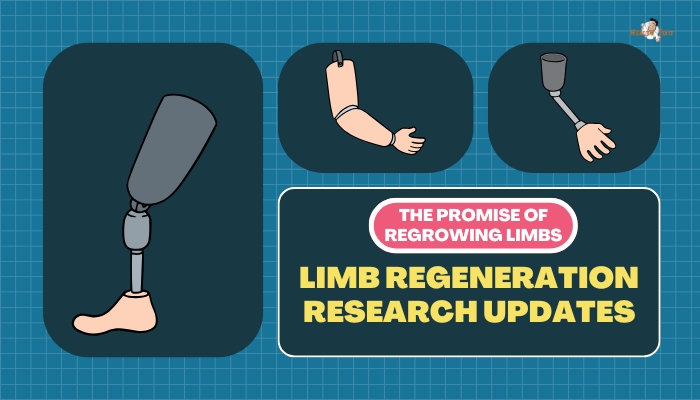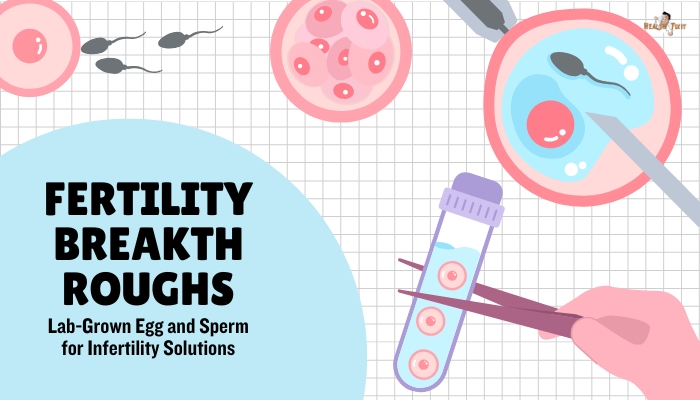Introduction
Lost a limb in an accident or war injury? For centuries, such trauma typically meant permanent disability.
Yet nature reveals a more optimistic path: many animals—from salamanders to axolotls—regenerate entire limbs without a scar.
This uncanny ability has spurred scientists to uncover whether a similar feat can be unlocked in humans. While challenges remain
modern tissue engineering, stem cell advances, and bioelectric cues offer fresh insights. This article explores the latest research on human limb regeneration,
how it might overcome biological constraints, and the ethical and practical considerations for taking regenerative biology into the clinic.
The Natural Basis of Limb Regeneration
Salamanders and Axolotls as Models
Salamanders and axolotls are classic models for limb regeneration: if they lose a leg, they regrow it—bones, nerves, and all. Key steps include:
- Wound Healing Without Scar: Instead of scarring, a blastema forms, a mass of dedifferentiated cells that proliferate to rebuild tissues.
- Patterning Signals: Molecular cues direct cells to re-form bones, muscles, and skin in the correct arrangement.
- Nerve Dependency: Limb regrowth needs nerve presence or growth factors from nerves, indicating a complex interplay between the immune, nervous, and musculoskeletal systems.
Why Humans Don’t Regrow Limbs
Humans can repair minor injuries—like cuts or small bone fractures—but full limb regeneration is absent. Scientists suspect scarring blocks the early steps seen in salamanders.
Moreover, human growth plate closure, complex immune responses, and lack of certain reactivation signals hamper large-scale regeneration.
Approaches to Human Limb Regrowth
Stem Cell and Blastema-Like Strategies
Pluripotent stem cells—capable of forming any tissue—are essential for complex regeneration.
Researchers aim to create “blastema-like” structures from induced pluripotent stem cells (iPSCs) to seed the missing limb region.
If these cells can be guided correctly via growth factors and mechanical cues, they may differentiate into cartilage, muscle, bone, and more.
Bioengineered Scaffolds
Tissue engineers develop 3D scaffolds that provide an architectural template for new tissues to grow. These scaffolds can be seeded with stem cells or relevant cell types,
with added signals (e.g., FGF2, Wnt proteins) to replicate the environment salamanders rely on. Over time, the scaffold degrades as the newly formed limb takes shape.
Nerve and Bioelectric Cues
Nervous system support is crucial for regeneration. Some labs experiment with nerve grafts or bioelectric stimulation (placing electrodes or delivering specific ion channel modulators) to replicate the signals that drive blastema formation.
Early results in animal models demonstrate partial regrowth of digit tips or improved tissue repair.
Notable Research Highlights
Digit Tip Regeneration in Humans
Young children can spontaneously regenerate fingertip segments if the injury is above the distal phalanx region
. Studies examining these cases provide insight into minimal conditions for partial regeneration. They highlight the importance of controlling scarring and preserving growth potential.
Axolotl Gene Transfer Experiments
Some labs have transferred certain axolotl regenerative genes into mammalian cells, checking if this can spur “pro-regenerative” states. Though preliminary, results indicate partial reactivation of embryonic pathways, but we remain far from replicating entire limb regrowth in mammals.
3D-Printed Tissue Constructs
In advanced tissue engineering, 3D printers produce multi-layer “limb prototypes,” embedding muscle and bone cells
. While these constructs are not fully functional limbs, they demonstrate the potential to build large tissues with vascular channels. Next steps involve integrating nerves and flexible joints.
Challenges and Obstacles
Complexity of Structure and Function
A fully formed limb encompasses bone, muscle, tendons, blood vessels, nerves, and skin—aligned precisely. Achieving correct morphological patterning and innervation in a lab environment is daunting. Minor missteps can lead to functionally useless structures.
Avoiding Immune Rejection
Even if patient-derived iPSCs bypass some rejection issues, implants or scaffolds might trigger immune reactions. Tissue engineering must ensure immunocompatibility, especially if gene editing is used to reprogram cells.
Safety and Time
Long timelines for regrowth present practical questions: months or years to reconstruct a limb? Meanwhile,
the risk of tumorigenesis from proliferating stem cells or accidental scarring complicates the path to clinical success. Rigorous safety protocols are essential before large-scale human trials.
The Ethical and Practical Implications
Cost and Accessibility
Building a functional limb from scratch—via stem cells, scaffolds, nerve guidance—will be expensive. Ensuring broad access if a method proves successful is crucial. Otherwise, such advanced therapies remain limited to wealthy individuals or specialized centers.
Regulatory Pathway
Regulatory bodies (FDA, EMA) must see comprehensive data from animal models, then phased human trials. Gaining approval for something as unprecedented as limb regeneration might require new frameworks—balancing patients’ urgent needs with thorough risk assessment.
Psychological Adaptation
For an amputee to accept and adapt to a newly regrown limb might entail extensive rehab. The re-innervation process could also come with phantom sensations or nerve confusion. Emotional counseling and physiotherapy remain central parts of the journey.
Future Outlook
Partial Regeneration Gains
Before full arms or legs, smaller breakthroughs—like better ways to regrow fingertip segments or advanced nerve reconstructions—could demonstrate viability. Step by step, these partial solutions refine technology for more complex builds.
Combining Gene Editing with Tissue Engineering
CRISPR might enable precise modifications that revert adult cells to a pro-regenerative state, reminiscent of salamanders, for instance. Coupled with advanced scaffolds, we might guide the regrowth blueprint at the genetic and structural levels.
Towards Full Limb Regeneration
Though still futuristic, many scientists believe incremental progress could yield near-complete limbs in future decades. The synergy of stem cells, scaffold design, nerve guidance, and gene editing fosters optimism—yet the timeline is uncertain.
Practical Takeaways for Patients and Providers
- Manage Expectations: Limb regeneration remains experimental. Current standard care—prosthetics or reconstructive surgery—still leads in function and reliability.
- Follow Clinical Trials: Some early-phase research might accept participants missing digits or partial limbs, focusing on small regrowth or advanced healing.
- Consider Combined Therapies: If partial regeneration techniques emerge, they may complement existing prosthetics or nerve repair, not instantly provide a fully grown limb.
- Stay Informed: Conferences, specialized research institutions, or philanthropic projects (like those for veterans) often publish progress updates. Keep an eye on peer-reviewed journals.
Conclusion
The ambition to regrow human limbs—once purely science fiction—gradually shifts toward scientific plausibility. Lessons from salamanders
, breakthroughs in stem cell biology, and cutting-edge tissue engineering converge in a quest for a radical new approach to amputation recovery.
While no one expects widespread limb regeneration therapies in the immediate future, incremental advances in partial digit regrowth
, nerve integration, and scaffold-based regeneration show promise. If these developments continue apace,
we may witness a day when losing a limb doesn’t mean living with a prosthetic forever, but regaining a functional, living extension—testament to the power of regenerative biology and medical innovation.
References
- Sandoval-Guzmán T, Wang H, Khattak S, et al. Fundamental insights into salamander limb regeneration as a blueprint for human regenerative approaches. Dev Biol. 2016;416(1):185–197.
- Gawriluk TR, Simkin J, Thompson KL, et al. Comparative analysis of regenerative growth in humans, mice, and axolotls. Curr Top Dev Biol. 2021;145:1–30.
- Mathews N, Jeffery WR. Gene expression patterns in salamander limb regeneration: bridging the gap to mammalian regeneration. Dev Biol. 2019;441(1):112–122.
- Stocum DL. Mechanisms of limb regeneration in salamanders. Curr Opin Genet Dev. 2017;40:108–115.
- Tateno M, et al. Tissue engineering approaches for partial digit regeneration in mammals. Tissue Eng Part B Rev. 2021;27(6):580–592.
- Tanaka EM. The molecules controlling limb regeneration. Genes Dev. 2003;17(9):1151–1163.
- Vig K, et al. Advances in 3D bioprinting for regenerative medicine. J Tissue Eng Regen Med. 2020;14(4):537–554.
- Kumar A, Velloso CP, Imokawa Y, Brockes JP. Plasticity of fibroblast differentiation in the amputated newt limb. Dev Biol. 2000;225(2):358–369.
- Huang Y, et al. Reprogramming adult human fibroblasts into a salamander-like limb regenerative phenotype. Stem Cells Dev. 2019;28(18):1272–1285.
- Schwarz S, et al. Neurotrophic factors and nerve signals in limb regeneration strategies: bridging the gap. Curr Opin Biotechnol. 2022;74:46–52.




